Disclosure: We may get commissions for purchases made through links in this post.
A concrete paver consists of abrasive aggregate, giving it a great grip and foot traction. But will it be slippery when wet? We took a closer look into it to get the answer for you.
Porous by nature, the concrete paver retains its skid resistance even when wet. They only become slippery when they get infested with moss, the greatest threat to pavers, increasing slip and fall incidents.
In the sections ahead, we’ve discussed how to make concrete non-slippery in-depth. Stick around to learn more!
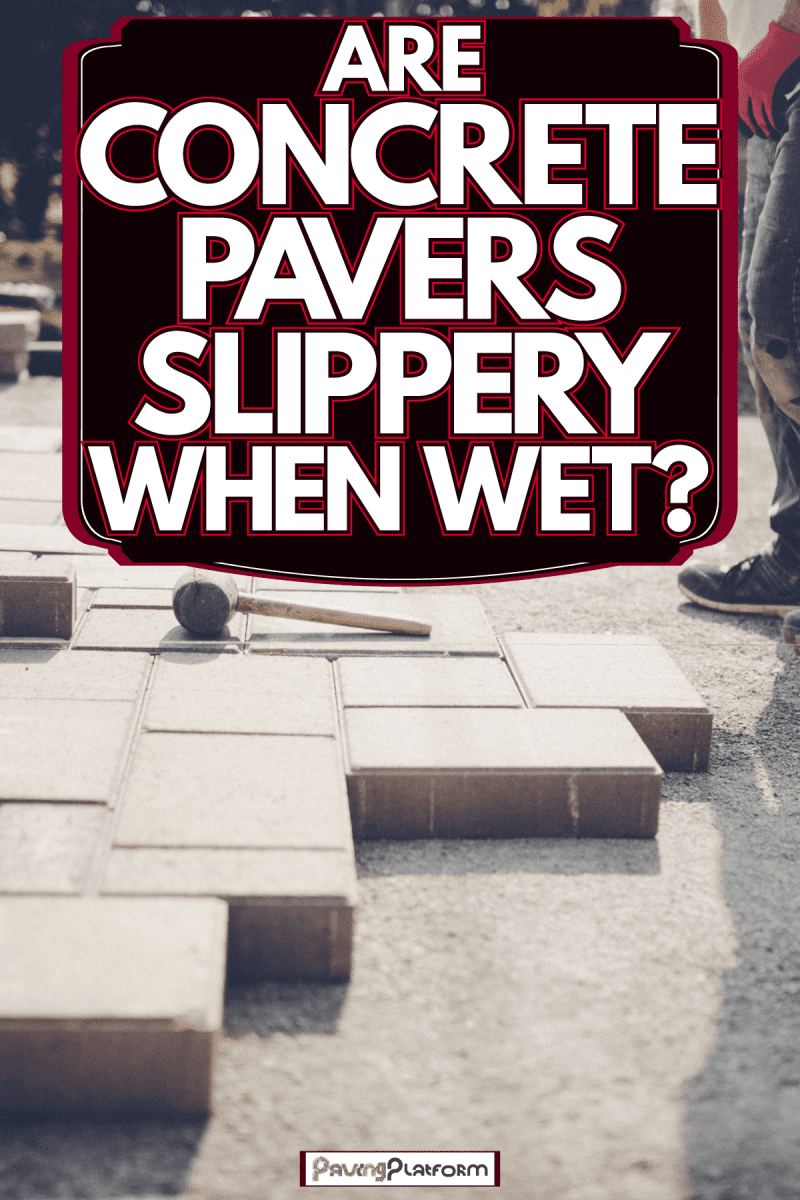
What Are The Hazards Of Slippery Paver?
Statistics show that out of 8 million slips and falls accidents in North America every year, a slippery surface accounts for 2 million injuries. People who encounter slip or fall sustain moderate to serious injuries, particularly in the hip, legs, arm, ankle, and spine. This results in limited mobility and the inability to do day-to-day chores.
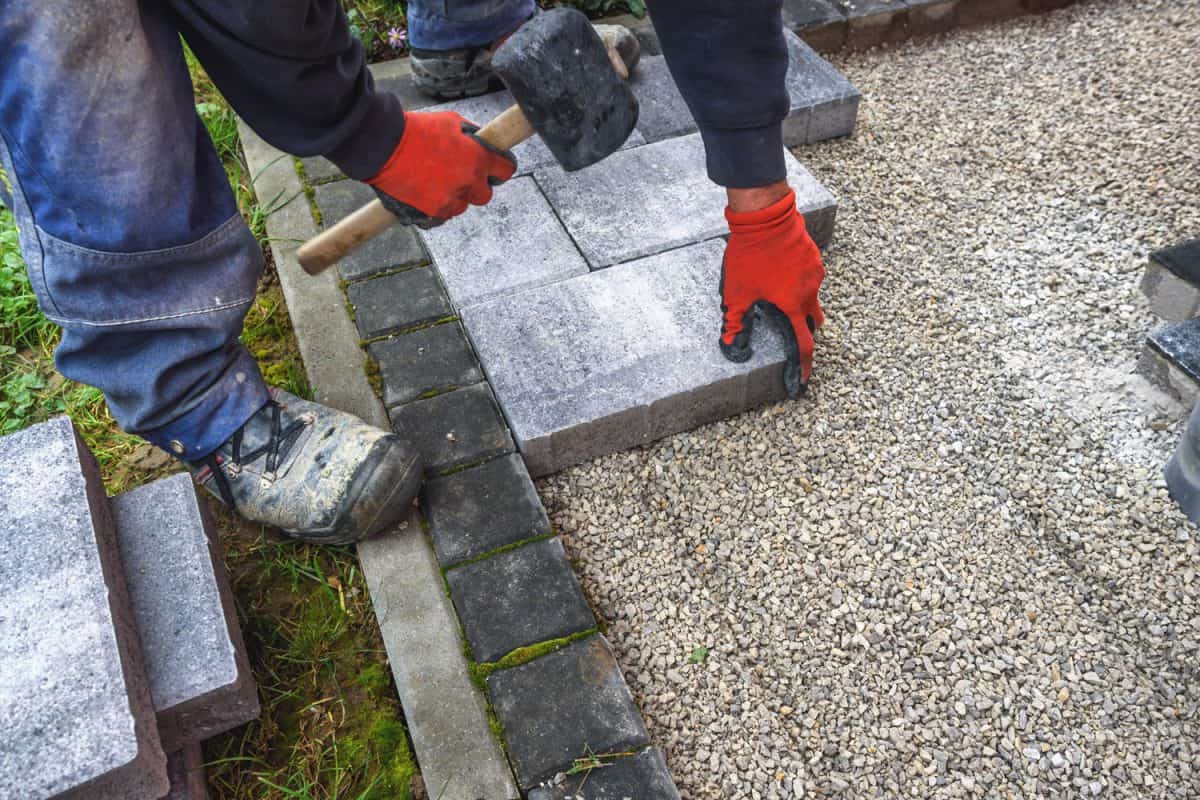
How To Fix Slippery Concrete Pavers?
There are three ways to fix slippery concrete:
1. Cleaning the paver on a regular basis.
2. Using non-slip additives.
3. Sealing the surface.
How To Clean Concrete Pavers?
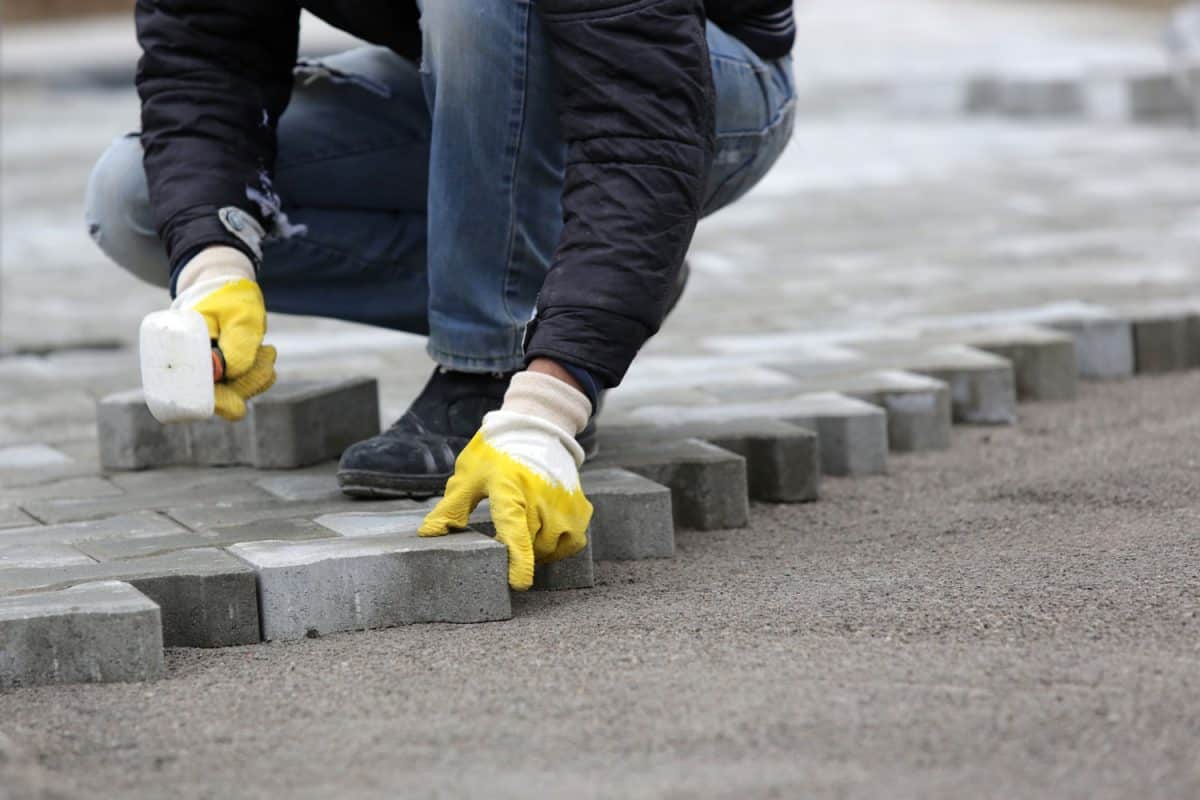
Tidying the pavers gets rid of moss, oil, grease, and other contaminants that can make the surface slippery. Here’s how to do it:
- Clear the paver. Remove obstructions such as plants, pots, and furniture.
- Pull out unwanted weeds. Scrub the ridges and the joints to loosen moss growing in that area.
- Wet the concrete with a hose or bucket of water.
- Scrub the surface with a non-wire stiff bristle brush and mild cleaning solution. Avoid using an acidic cleaning agent as these can loosen the aggregate. Use liquid detergent or baking soda. Just mix and dilute them with water.
- Once done, use a hose to blast away the dirt and grime that have been lifted.
What To Avoid When Cleaning Concrete Pavers?
Avoid using aggressive cleaning materials such as:
- Wire bristle brush scratches away the protective seal -if the paver has already been sealed.
- Pressure washers get rid of moss and dirt easily but it can destroy the seal and porous part of the concrete.
- Acidic solutions- as mentioned, this dissolves the concrete components, resulting in corrosion.
- Bleach causes stain and discoloration on the surface.
How To Add Non-Slip Additives?
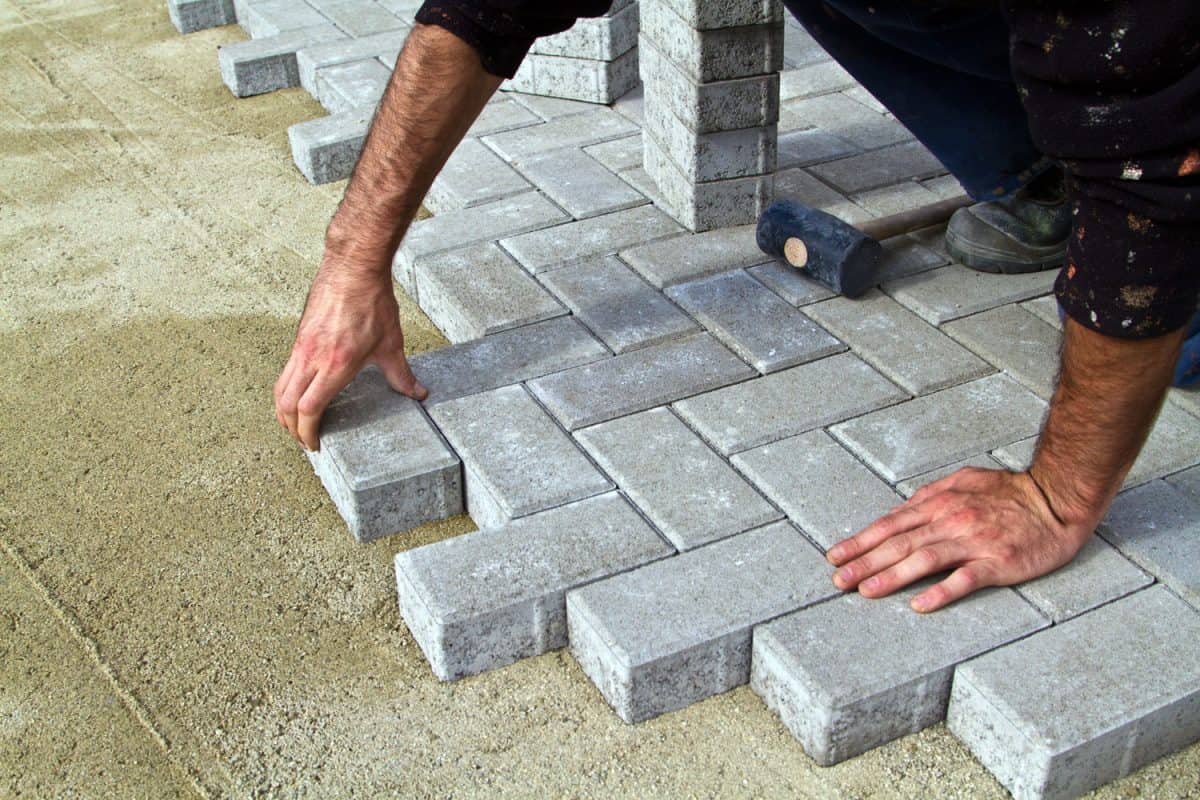
This sand-like substance is mixed with the sealer to improve traction. It can also be sprinkled on the surface during the drying or curing process. There are three types of anti-slip additives: sand, aluminum oxide, and polycarbonate.
The first two are hard-wearing, but they can be visible on the surface, while the polycarbonate is non-visible, but it doesn’t last long. If the sheen is no issue, then the sand and aluminum oxide make the best option.
Read the directions of the product firsts for additional instructions.
- Pour the sealer into the bucket, add the non-skid additive, then stir. Occasional stirring might be required to prevent the mixture from clumping together.
- Coat the concrete with a thin layer using a roller. For sprayable sealer, spray the sealer on the surface before adding the additive. Spray the second layer, then allow it to dry.
Check out this product on Amazon.
How To Seal Concrete Pavers?
Seal coat is used to fill the holes on the concrete brought about by water evaporation for a smooth finish. But it’s also used to double the traction on the concrete paver or floor. However, it has to be applied properly.
See steps below:
- Tidy the surface first. Remove all the stains, grime, and grease.
- Remove the existing sealer, if there’s any.
- Apply an etching solution to open the layers of the concrete. Warning: This is highly toxic, so make sure to wear protective equipment such as gloves, mask, boots, and goggles to prevent health hazards and injuries.
- Coat the surface with a thin layer of sealer, then allow it to dry.
- Apply the second coat.
- Let it sit and dry before using the pavers again.
Check out this item on Amazon.
Remember to wear overalls or old clothes when applying sealants because it is hard to remove. If you’re sealing a closed space, ensure that the place is properly ventilated to avoid inhaling the chemicals.
Other Situations Where A Concrete Sealer Is Useful
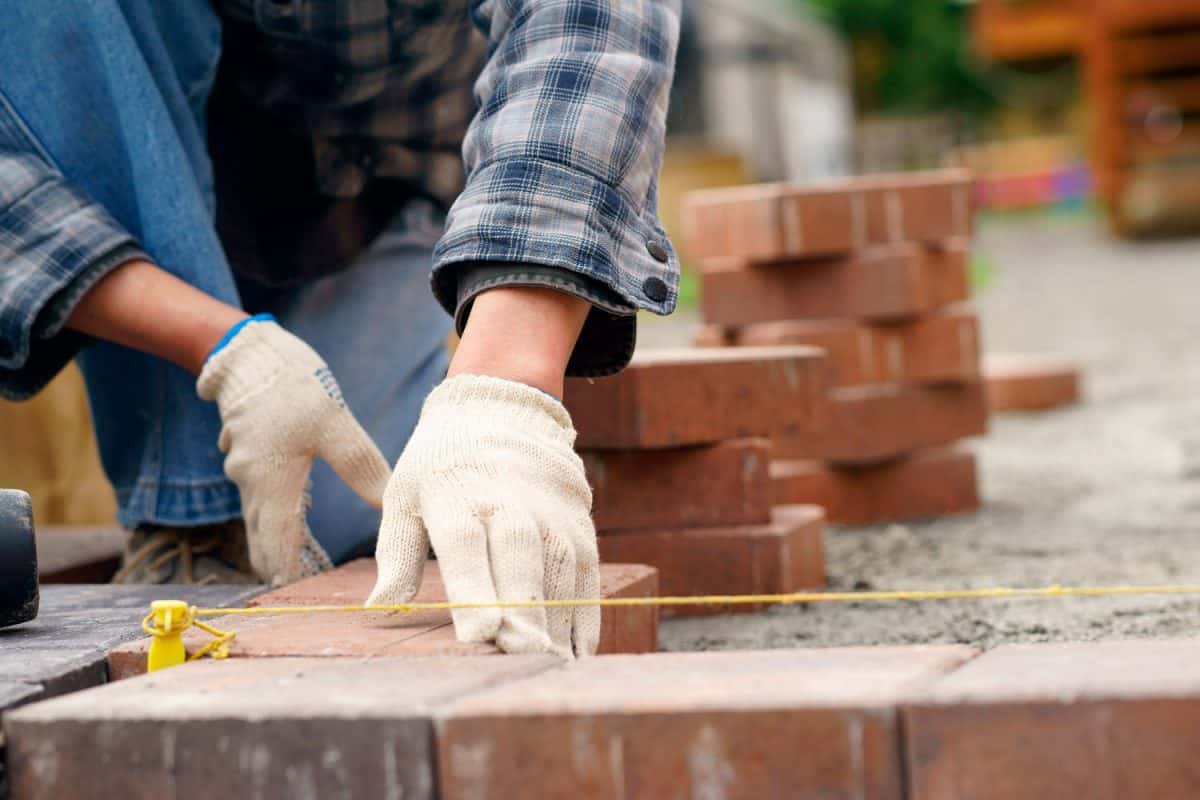
A concrete sealer is particularly useful in wet areas such as the bathroom, pool areas, and driveway. It is also recommended in high traffic areas such as business and commercial premises where customers and employees often move across. It minimizes slips and falls accidents.
Disadvantages Of Sealing Pavers
Check out some cons of the sealing paver to determine if it can benefit you in the long run:
Maintenance
Once the pavers are sealed, periodic maintenance is required as the film breaks away over time. The frequency depends on the type of sealant applied, but resealing the pavers every two to three years is recommended. This keeps the concrete in a good shape and maintains good traction.
Costly
A quality sealant can cost $60 to $200. There are affordable sealants, but remember that the quality directly affects the durability and reliability of the material.
Plant Contamination
Sealants emit volatile organic compounds VOCs during the curing process, which get mixed in the air and contaminate nearby plants. Be sure to take away the potted plants from the area or cover them with plastic to prevent contamination.
Safety Tips: Avoid Slips & Falls on Pavers
1. Keep your pavers clean, safety and sanitation work hand in hand. If the pavers are always damp and full of moss, it increases the trip or slip occurrences. Schedule a periodic cleaning or remove the moss as soon as you notice them.
2. Suspend the use of the pavers, if necessary to avoid accidents. Pavers become extra slippery during winter because frost builds on the surface. Find an alternate walking or driving route when feasible.
3. Use non-grit tape: this contains abrasive materials, increasing foot traction in slippery areas.
Check out this item on Amazon.
4. Remove obstacles on the pavers. Keep the pathway or driveway obstacle-free as unkempt areas are also one of the common causes of trips especially in dark areas. Don’t leave hose and wires across.
5. Illuminate the area, using proper lighting around the paver. It allows people to see even at night, preventing hazards.
6. Use non-skid footwear. As the name suggests, these have better traction than regular footwear, preventing slips and falls even in wet and greasy areas. You can also buy non-skid pads that you place at the sole of the shoe or slipper.
Can You Sand Concrete Instead Of Etching?
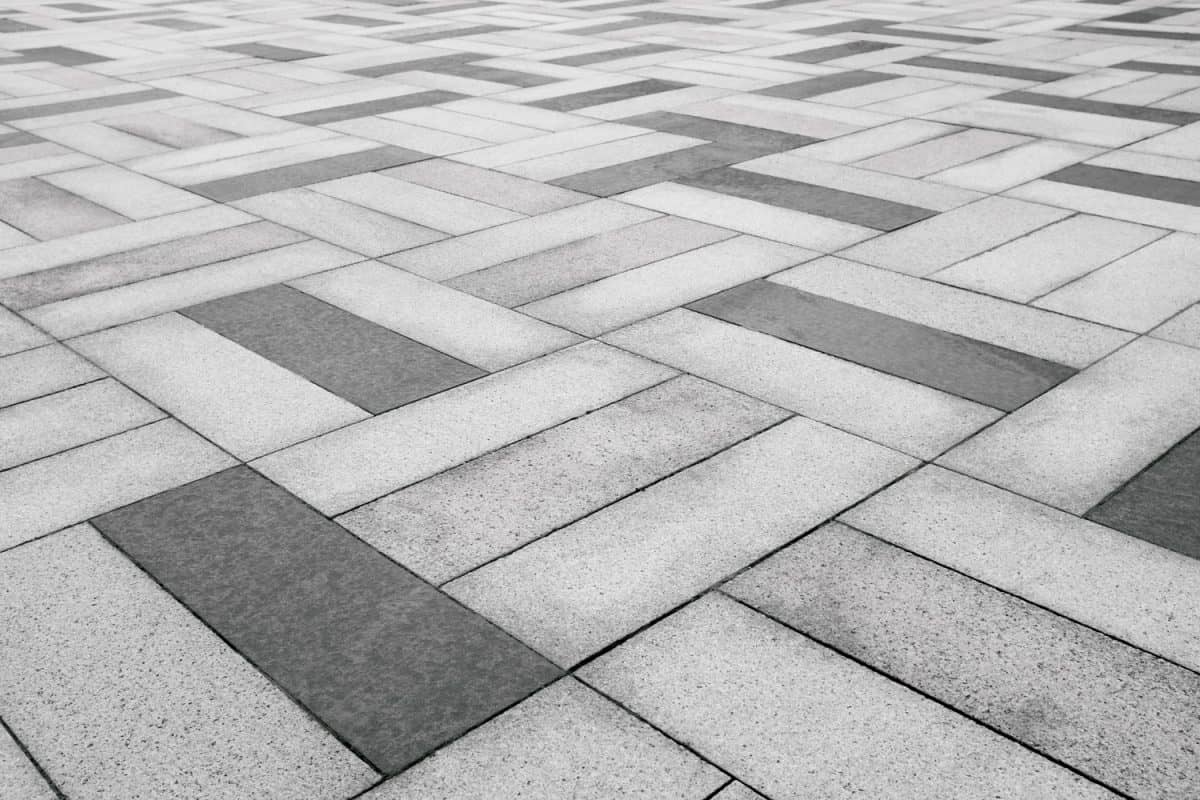
Etching prepares the floor for coating and sealing. It opens up the pores of the concrete, making it rougher and allowing the viscous substance to adhere well.
If you don’t like to acid etch, you can also sand the concrete. You need to grind the floor first with the correct grit level to achieve the profile required for coating.
What If You Don’t Etch The Concrete Before Coating?
Skipping this process causes the sealant and paint to blister as the mixture won’t adhere all the way down to the concrete. This will lead to peeling which wastes your time and money.
Can You Use Vinegar To Etch Concrete?
Etching concrete with vinegar might work, but it will take a long time because vinegar has mild acidity. If you don’t want to use an acid for etching, try organic products such as Eco-Etch Pro. This is a friendly alternative to muriatic acid that doesn’t burn skin and hurt plants.
Conclusion
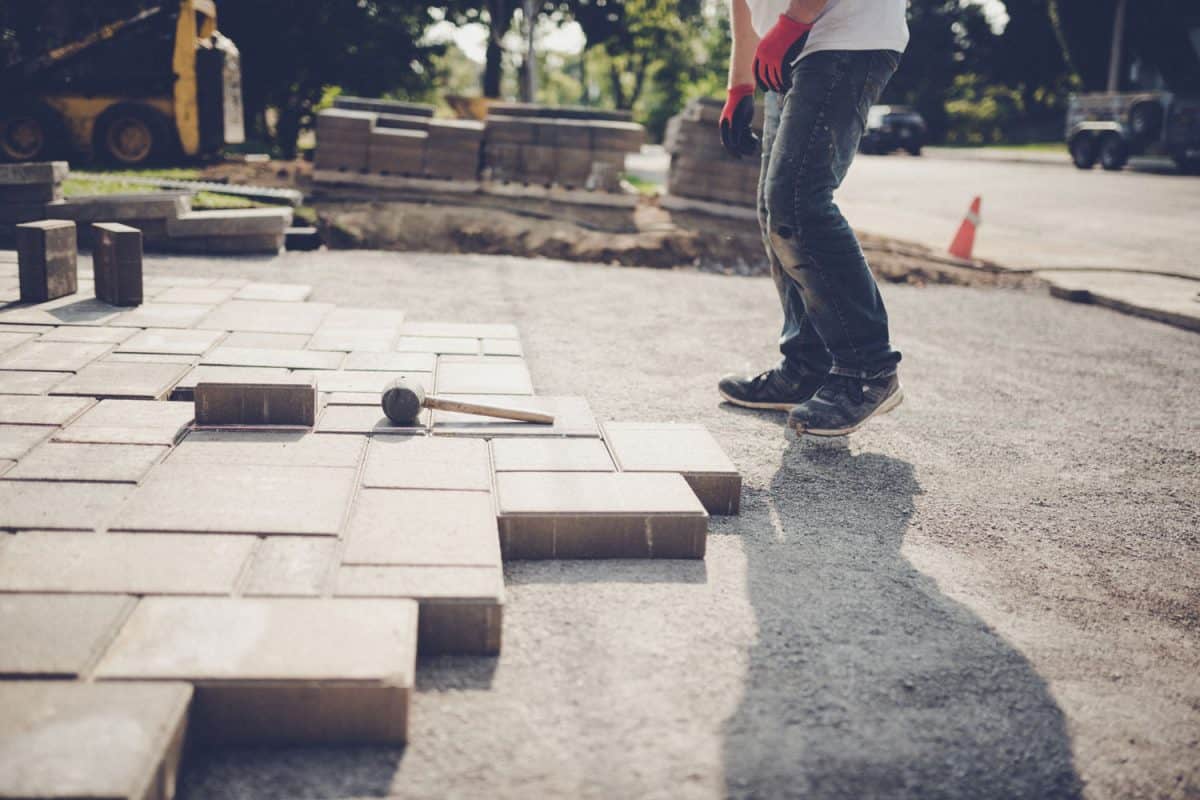
A concrete paver is porous by nature, giving it a good grip even when wet. It becomes slippery once it gets infested with moss. So make it a habit to clean and seal the paver regularly to maintain and improve its traction.




![Vibrant Red Paver Stone Path, Can You Spray Paver Sealer? [How To Apply It]](https://pavingplatform.com/wp-content/uploads/2022/04/Vibrant-Red-Paver-Stone-Path-600x400.jpg)
![Properly laid out red pavers for a garden, Can You Tint Paver Sealer? [And How To]](https://pavingplatform.com/wp-content/uploads/2022/04/Properly-laid-out-red-pavers-for-a-garden-600x400.jpg)
